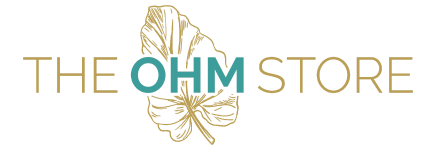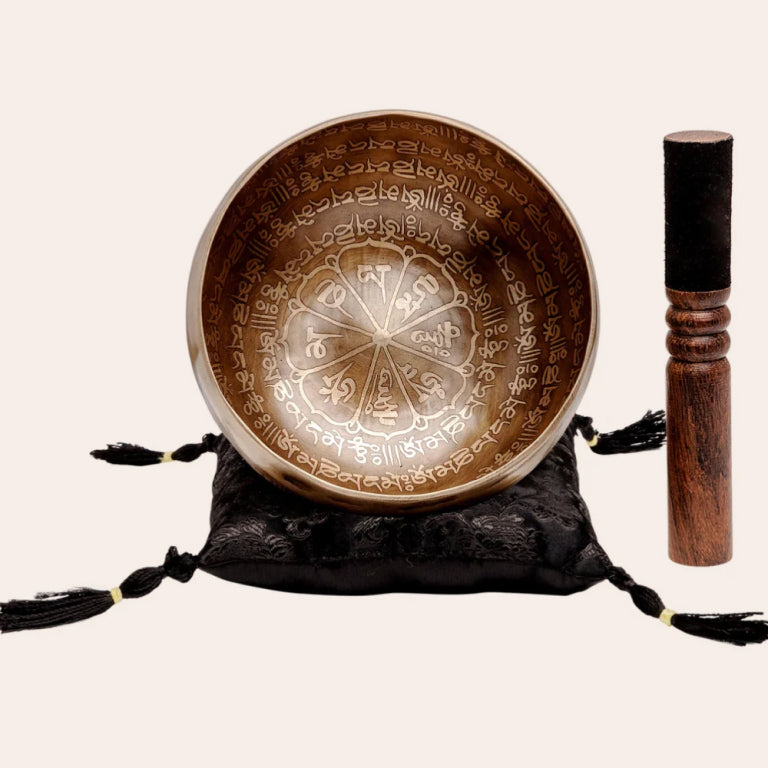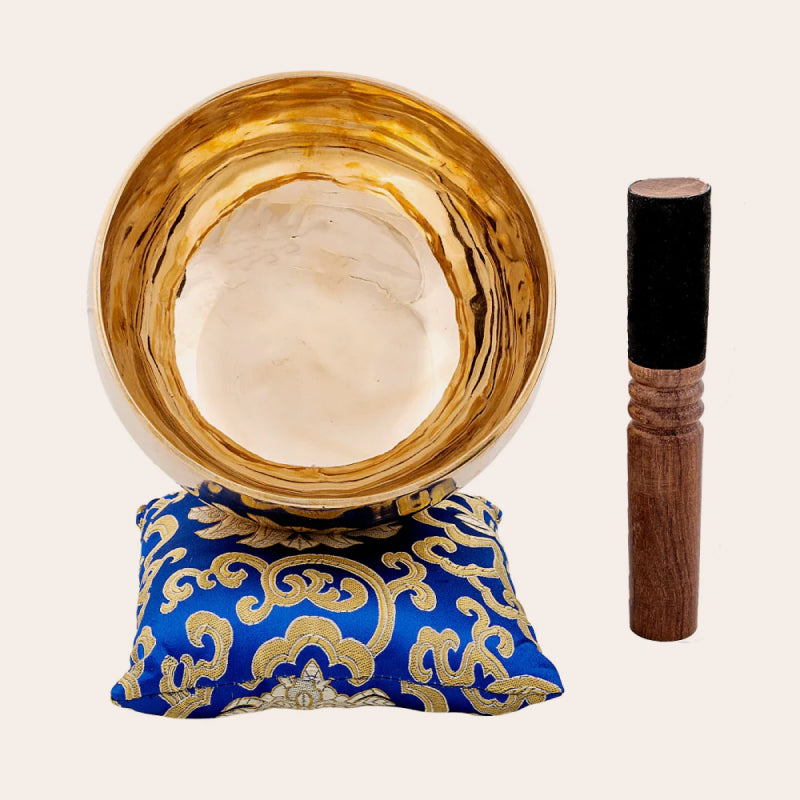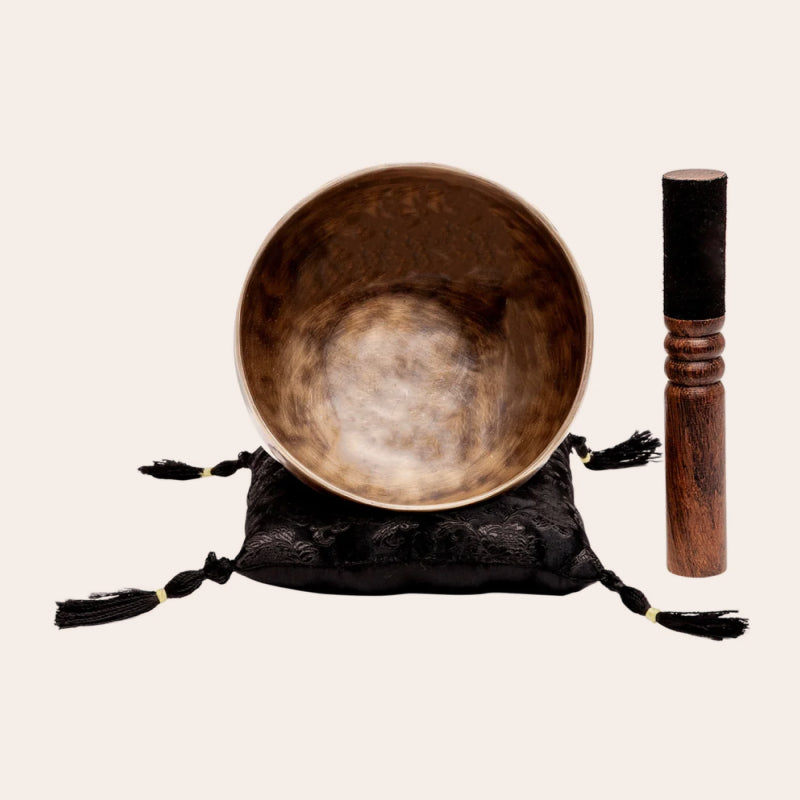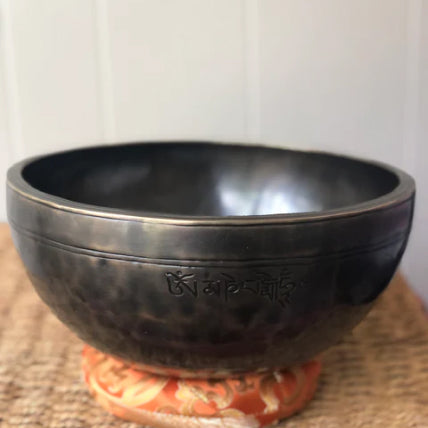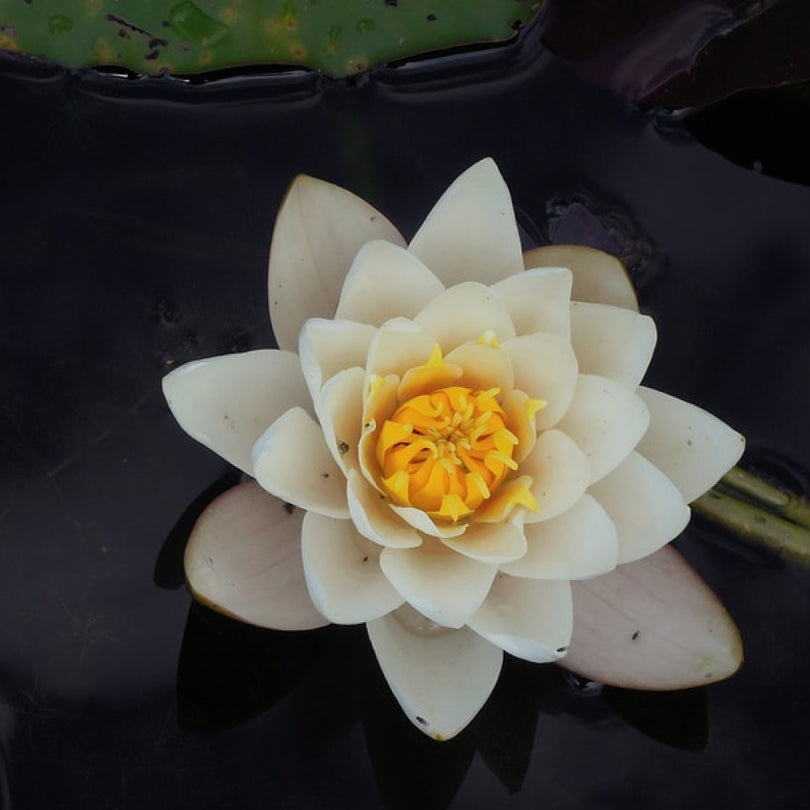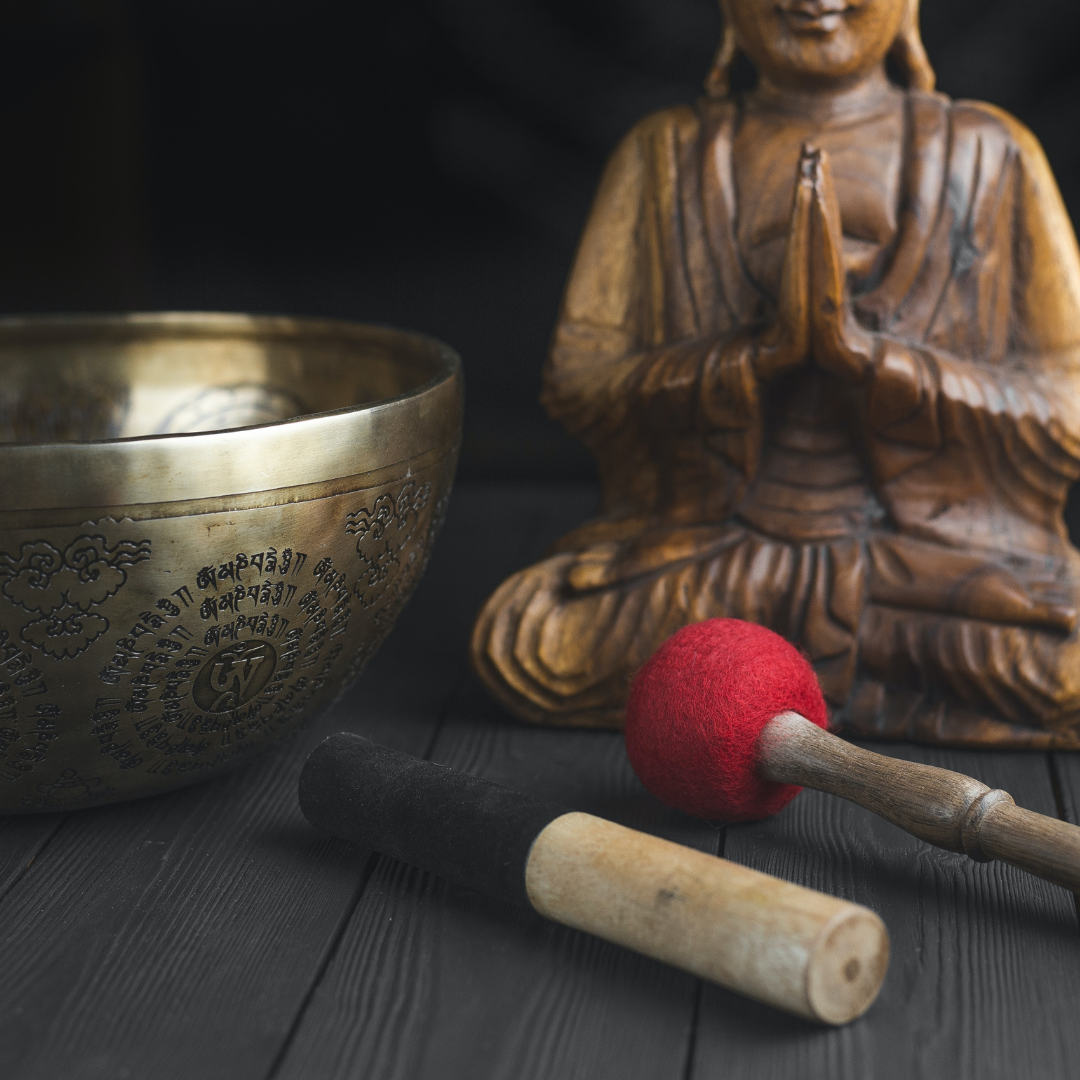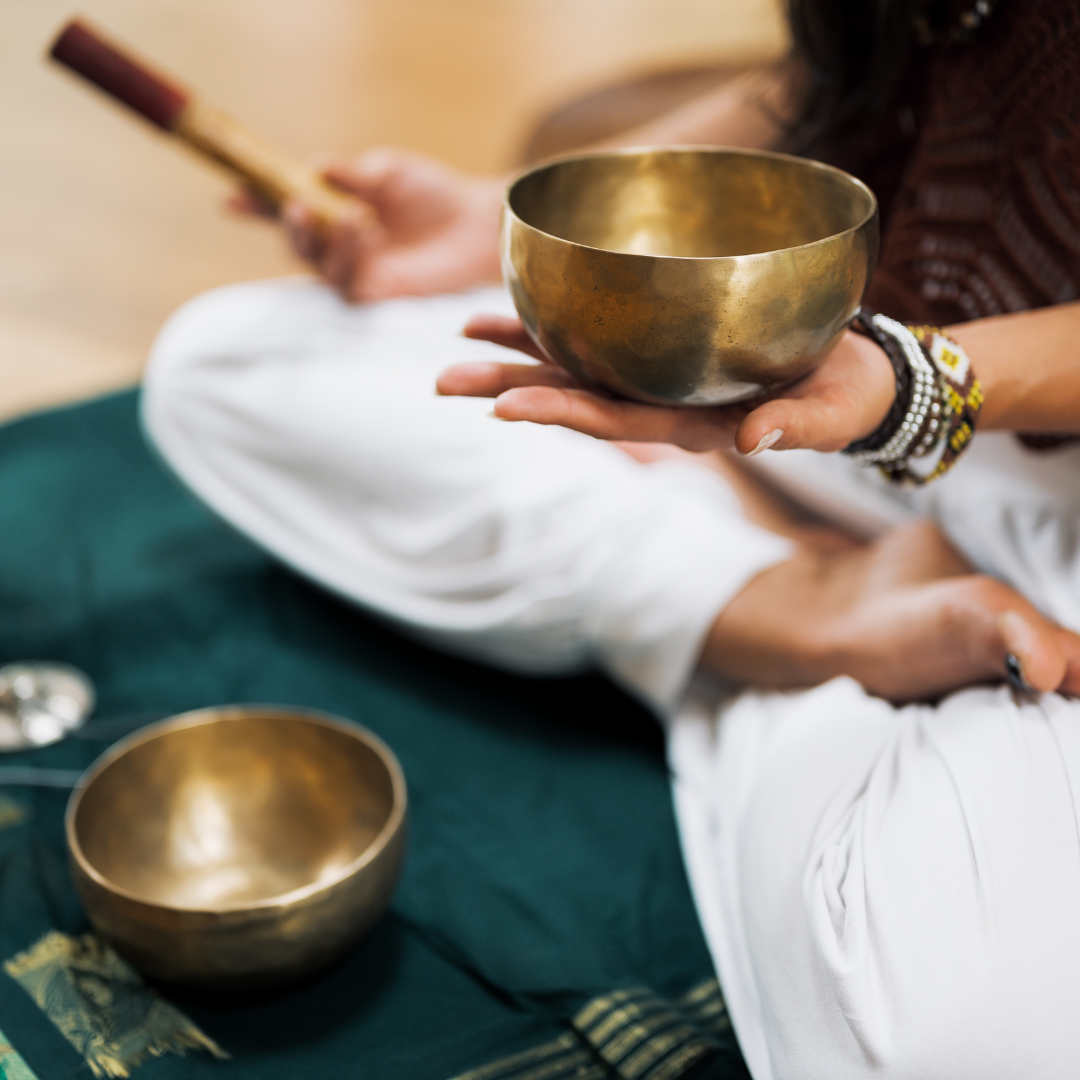Part 4: Healing Sound -The Benefits of Sound Baths and Techniques
Let's start -- what is a sound bath?
A sound bath is defined as deep immersion in sound waves. Besides bringing down pain, anxiety, tension, disorder, and disharmony, it can slow heart rate and blood pressure. They’re conducted with instruments like rattles, chants, tuning forks, chimes, tanpura, shakers, metallic disks, didgeridoos, and singing bowls.
Essentially, a sound bath combines sound and meditation to guide you into a deep state of mind. Let’s find out all about it in detail.
Overview: What Is A Sound Bath? Where did it come from?
A sound bath is easy to understand- the process of bathing in sound waves. That said, it’s different from music therapy.
Sound baths don’t include a melody, beat, rhythm, or repetition of tones that the mind can hook onto like music does. It’s centered on changing resonance and overtones to push the listener to release and let go (Very Well Mind).
While the history of sound baths goes all the way back to ancient Greece, you can find some form of this in many cultures around the world.
In Australia, sound baths involved didgeridoos. In the Himalayas, they are done with Tibetan bowls.
Interestingly, Greeks used sound baths for more than just relaxation and calming nerves. They used it for aiding mental disorders, indigestion, insomnia, and other medical conditions.
The ancient Greek philosopher Aristotle said that a flute sound bath is excellent for soul purification, in De Anima in 350 B.C.
Today, sound baths include laying down or sitting in yoga poses while sound instructors play instruments with resonant vibrations.
Benefits Of Sound Baths: How Does A Sound Bath Work?
While history had its own mythical stories surrounding the healing properties of sound baths, it was in the 19th century that scientific research around the subject actually took place.
These studies concluded that the benefits of sound baths conducted by shamans, healers, priests, and psychics across different cultures were actually valid.
So, how does it work?
First, sound baths push your brain into the theta state of meditation, where your fight or flight responses are switched off.
So, you’re naturally de-stressed.
A 2020 study (PubMed) of sound baths with singing bowls found they lowered heart rate and blood pressure.
Most sound baths use androgynous sounds that shift you into the parasympathetic state of mind, a phase of relaxation, healing, and repair. Sound baths do so by switching off your sympathetic nervous system (Brain Tap).
Your body will start repairing itself by boosting digestion and burning fats through metabolic processes.
When it comes to pain, tension, anger, and low mood, a 2016 study proved meditation with sound bath significantly helped the mental well-being of the listener (NCBI).
Another study in 2018 found enjoying a sound bath with Tibetan bowls before surgery significantly reduced anxiety (NCBI).
Several more studies prove the effectiveness of sound baths for depression, learning disorders, PTSD, confusion, insomnia, and better well-being.
If you’d like to know more about it, don’t hesitate to ask us about via email at hello@theohmstore.co -- we are happy to help!
What Are The Different Types Of Sound Baths, And How Do They Work?
Every sound bath session, whether in a community like Church or your local yoga center, usually includes a guided meditation.
Sound bath sessions can be conducted with several instruments, but the most popular one includes a gong. It could be of any shape or size. They can take your brain into alpha and theta brainwave states.
In fact, gong baths were used by Greeks, Romans, and Egyptians besides Tibetans in ancient times.
Tank drums, flame drums, metallic discs, and handpans are other instruments to induce sound baths. You might’ve seen them around music festivals! They’re easy to play on your own and commonly found inscribed with Sanskrit words.
Shakers, rattlers, and other plant instruments are commonly used for sound bath sessions. Reed instruments like harmonium and shruti box also have deep sonorous sounds ideal for sound baths.
When it comes to reed instruments like Tanpura and tambura, they have many uses like in music and sound therapies too.
As we learned in the article on the therapeutic effects of sound, the human voice is a powerful way to marry sound and vibration required for sound baths. But it requires a lot of practice to avoid melodizing it.
That said, sound bath practitioners use humming and chants to induce healing baths with their voices.
Combining tuning forks with white noise is another great way to create the ambiance of a sound bath for healing. The sound of this instrument creates frequencies in the ultrasound scale typically used in medical settings for bone and muscle therapies to create something like a sound massage.
Lastly, didgeridoo sound therapy is trending hot nowadays, and that’s why didgeridoo sound baths are common.
How To Do A Sound Bath With Singing bowls?
For starters, sound baths aren’t typically done by yourself. It requires another person to control the sound so that the listener can soak into the healing sound waves without any distractions.
Alternatively, you can tune into a sound bath track like this one from Healing Vibrations to do it yourself. However, that would be simply half as effective without someone to guide you in and out of the sound bath.
When you’re doing it with your own sound bowl, it’s important to hold it in your palms and set an intention first. Once you’ve done that, strike the bowl or rub it over the rim to play it slowly in varying motions.
The listener should recline into a comfortable position or yoga pose when the sound setup is done. Then, they can start meditating.
Apart from the singing bowl, the sound practitioner can also use a mix of sound instruments like shakers, rattlers, chimes, tuning forks, etcetera to set overlapping tones.
The sound practitioner will lead you back to awareness to end the sound bath session with singing bowls when the session ends.
Here’s a singing bowl sound bath session with Michelle Goldstein to know it better.
Tibetan Bowls Sound Bath 🧘♀️ Singing Bowls Only (no talking)
Before You Go …
The best way is to look for practitioners near you who offer these sessions. Even virtual setups work great with good-quality speakers if you aren’t comfortable with face-to-face sessions.
Try sound bath sessions on YouTube, Audible, Spotify, or other music platforms when nothing works. They’re a great way to diss the dis-harmony, dis-connection, and dis-ease to find peace and relief.
Try it and let us know what you think!
